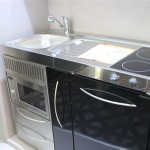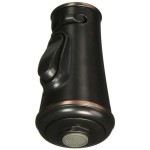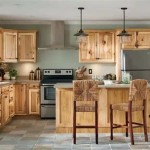Pop Up Electrical Outlets for Kitchen Islands: A Comprehensive Guide
Kitchen islands have evolved from simple workspaces to multi-functional hubs for cooking, dining, and socializing. This increased functionality necessitates readily available power sources for appliances, gadgets, and other electronic devices. Pop-up electrical outlets offer a convenient and aesthetically pleasing solution for integrating power into kitchen islands without compromising the island’s design or functionality. This article explores the benefits, features, installation considerations, and various types of pop-up electrical outlets available for kitchen islands.
Traditional wall outlets are impractical for islands located away from the kitchen perimeter. Extension cords, while a temporary fix, create tripping hazards and detract from the kitchen’s overall appearance. Pop-up outlets, on the other hand, remain hidden within the island countertop when not in use, preserving a clean and uncluttered look. When power is needed, the unit rises from the surface, providing access to electrical receptacles, and sometimes USB ports or other functionalities. This combination of convenience and aesthetics makes pop-up outlets a popular choice for modern kitchen designs.
Advantages of Incorporating Pop-Up Outlets
The primary advantage of pop-up outlets is their space-saving design. They retract completely into the countertop when not in use, maximizing the available workspace on the island. This feature is especially beneficial in smaller kitchens where counter space is at a premium. Furthermore, these outlets enhance the aesthetic appeal of the kitchen by eliminating the need for unsightly extension cords or permanently visible outlets on the island’s surface. The sleek, minimalist design of pop-up outlets integrates seamlessly with various kitchen styles, from contemporary to traditional.
Safety is another significant benefit of pop-up outlets. When retracted, the outlets are protected from spills and splashes, reducing the risk of electrical shock. Many models also incorporate child-safety mechanisms to prevent accidental activation or access. This safety feature provides peace of mind, especially in households with young children. Moreover, the concealed design minimizes the potential for damage to the outlets themselves, extending their lifespan and reducing the need for frequent replacements.
The versatility of pop-up outlets extends beyond basic electrical power. Many models include USB ports, allowing for convenient charging of smartphones, tablets, and other devices. Some even feature Ethernet ports for network connectivity. This multi-functionality makes the kitchen island a truly versatile workstation, capable of supporting various activities, from cooking and meal preparation to remote work and entertainment. The ability to charge devices directly at the island eliminates the need to search for available outlets elsewhere in the kitchen, streamlining workflow and improving overall convenience.
Key Features to Consider When Selecting a Pop-Up Outlet
When selecting a pop-up electrical outlet for a kitchen island, several factors should be considered to ensure optimal performance, safety, and aesthetic integration. The first consideration is the number and type of receptacles offered. Determine the number of electrical outlets needed based on anticipated usage. Consider whether USB ports or other specialized ports are required. Some models offer a combination of standard electrical outlets and USB charging ports, while others may include Ethernet ports or even wireless charging pads.
The material and finish of the pop-up outlet are crucial for both durability and aesthetics. Stainless steel is a popular choice due to its durability, corrosion resistance, and sleek appearance. Other options include brushed nickel, chrome, and matte black. Choose a finish that complements the existing hardware and fixtures in the kitchen to ensure a cohesive design. The material should also be resistant to scratches and stains, as the outlet will be exposed to frequent use and potential spills.
The retraction mechanism is another important feature to evaluate. Some models use a manual push-down mechanism, while others feature a spring-loaded or motorized mechanism. The manual push-down mechanism is generally more affordable and reliable, but it may require more effort to operate. Spring-loaded or motorized mechanisms offer smoother and more convenient operation, but they may be more expensive and potentially more prone to mechanical failure. Consider the frequency of use and personal preferences when selecting the retraction mechanism.
Safety certifications, such as UL or ETL, are essential to ensure that the pop-up outlet meets industry standards for safety and performance. Look for models that are tamper-resistant and feature child-safety mechanisms. Water resistance is another important consideration, especially in a kitchen environment where spills and splashes are common. Choose a model that is designed to withstand moisture and prevent electrical shock. Overload protection is also a valuable feature, as it protects the outlet and connected devices from damage caused by power surges or excessive current draw.
Installation Considerations and Procedures
Installing a pop-up electrical outlet typically involves cutting a hole in the kitchen island countertop to accommodate the unit. It is crucial to carefully measure the dimensions of the outlet and follow the manufacturer's instructions precisely to ensure a proper fit. The installation process may require basic electrical wiring skills, and it is generally recommended to hire a qualified electrician to perform the installation, especially if you are not comfortable working with electrical wiring.
Before installation, ensure that the area beneath the countertop is clear of any obstructions, such as plumbing or electrical wiring. The pop-up outlet typically requires a certain amount of clearance below the countertop to allow for the retraction mechanism to operate smoothly. Check the manufacturer's specifications for the minimum clearance requirements and make sure that there is sufficient space available.
The wiring of the pop-up outlet involves connecting it to the kitchen's electrical circuit. It is essential to follow all applicable electrical codes and regulations. Use appropriate gauge wires and connectors to ensure a safe and reliable connection. Grounding the outlet is also crucial for safety. If you are unsure about any aspect of the wiring process, consult a qualified electrician.
Once the outlet is installed and wired, test it thoroughly to ensure that it is functioning correctly. Check all electrical outlets and USB ports to verify that they are providing power. Also, test the retraction mechanism to ensure that it is operating smoothly and that the outlet retracts completely into the countertop. If you encounter any problems, consult the manufacturer's troubleshooting guide or contact a qualified electrician.
Types of Pop-Up Outlets and Their Applications
Pop-up outlets are available in various configurations to suit different needs and preferences. Some models are designed to be flush with the countertop when retracted, providing a seamless and unobtrusive appearance. Others have a slightly raised profile, which may be preferred by some users for easier access. The choice depends on personal preferences and the overall design of the kitchen.
Retractable outlets are designed to disappear completely into the countertop when not in use, leaving a clean and uncluttered surface. These outlets are ideal for kitchens where aesthetics are a top priority. They are typically more expensive than other types of pop-up outlets, but they offer the ultimate in convenience and style.
Rotating outlets offer a unique and versatile solution for providing power to multiple devices. These outlets can be rotated to expose different combinations of electrical outlets, USB ports, and other functionalities. They are ideal for kitchens where multiple devices need to be powered simultaneously. Rotating outlets are typically more complex than other types of pop-up outlets, but they offer greater flexibility and convenience.
Corner pop-up outlets are designed to be installed in the corner of a kitchen island or countertop. These outlets are ideal for kitchens where space is limited. They maximize the available workspace by utilizing the often-underutilized corner areas. Corner pop-up outlets are typically smaller than other types of pop-up outlets, but they still offer a convenient and accessible power source.

Pop Up Electrical Outlet In The Kitchen Island Contemporary Miami By Oc Architectural Woodwork Houzz

All About Getting A Pop Up Electrical Outlet On Your Kitchen Countertop Kato Independent Contractor Vancouver Bc

2024 Changes Electric Outlets In Kitchen Islands

Electrical Popup Outlet On Kitchen Island Is It Against Building Codes Home Improvement Stack Exchange

This Pop Up Outlet Is Genius

Pop Up Electric Outlet In The Kitchen Island Contemporary Miami By Oc Architectural Woodwork Houzz

Kitchen Pop Up Outlets Lew Electric Fittings Company

Pop Up Kitchen Power Grommet 20a Countertop Outlets For Countertops Mockett

10 Best Pop Up Outlets Ideas Outlet New Kitchen

Custom Hidden Countertop Pop Ups Up Outlets








